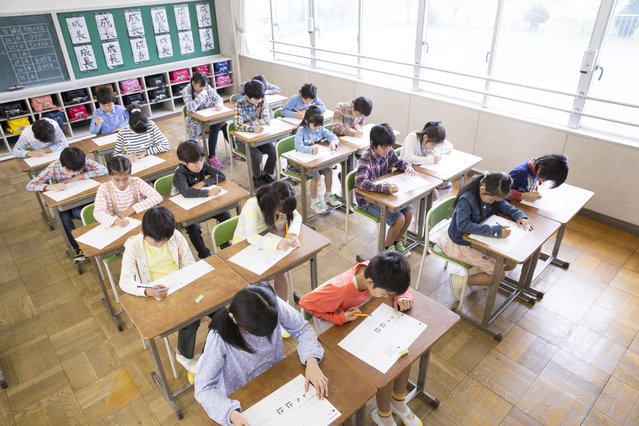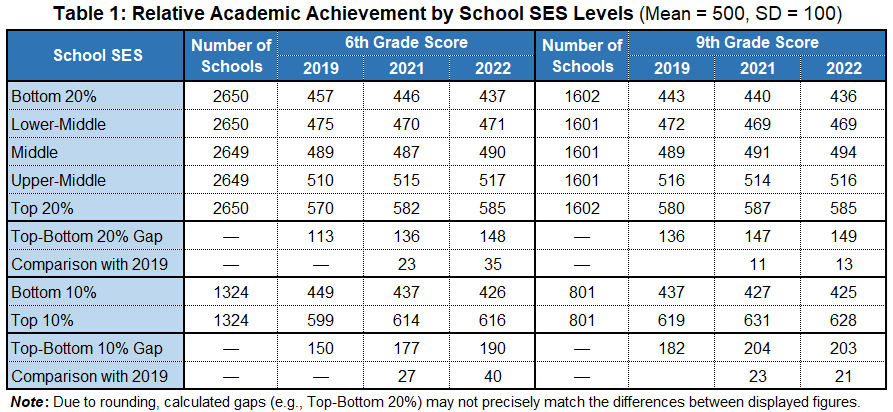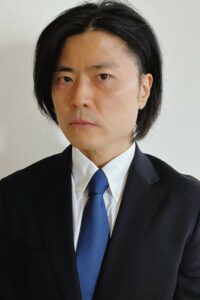Educational Inequality in Japan: Trends Before and After the Pandemic and Recent Policy Developments

Definition and Overview of Educational Inequality
Educational inequality refers to the disparities in educational outcomes (e.g., academic achievement and overall educational attainment) that vary depending on conditions beyond an individual’s control— including the socio-economic status (SES) of their family of origin or the region in which they grew up. SES encompasses a wide range of social, economic, and cultural factors, including parents’ occupations, educational attainment, household income, the number of books in the home, and other cultural resources and practices. Such SES-based inequality is consistently observed across societies participating in large-scale international assessments, such as the Programme for International Student Assessment (PISA) conducted by the Organisation for Economic Co-operation and Development (OECD). This is not confined to nations with pronounced economic disparities, like the United States, but is also evident in Japan, often regarded as an egalitarian society.
In fact, using fathers’ educational attainment as a proxy for SES reveals a consistent relationship between fathers’ and children’s educational attainment across all generations raised in postwar Japan. This trend persists even when accounting for other factors beyond fathers’ education. Despite decades of significant societal change, including rising university enrollment rates, SES-based disparities in children’s educational attainment—particularly those linked to fathers’ education—have remained a persistent feature of Japan in recent decades. While there are some generational variations, this phenomenon is neither recent nor limited to families living in poverty.
In postwar Japanese society, individuals’ educational and occupational attainment are often regarded as products of their own ability and effort, rather than their social origin. However, in practice, family SES and region of origin are not entirely independent of one’s final educational attainment, which subsequently shapes occupational status. While this is a general trend with exceptions, success stories from disadvantaged backgrounds do not negate the broader pattern consistently reflected in nationally representative data: Japan is indeed a stratified society, much like many others. In fact, the level of educational inequality based on family SES in Japan is about average among developed nations—neither exceptionally high nor notably low. In essence, Japan can be described as “mediocre” in terms of being a society where life and career opportunities are, to some extent, constrained by one’s social origin.
Changes Before and After the COVID-19 Pandemic
My book, Kyoiku Kakusa (Educational Inequality) [Chikuma Shinsho], which examines long-term trends in educational inequality, realities at each educational stage from preschool to high school, international comparisons, and policy discussions, was published in July 2019. Thanks to readers and reviewers, the book has reached its 17th printing, with 72,000 copies printed, including the e-book edition. It was also awarded third place in the Chuo Koron Shinsha New Book Award 2020 (Shinsho, or New Book, is a popular paperback series for non-fiction titles by many publishers in Japan, with over 1,500 titles considered for the award that year). This reception opened up opportunities for me to engage in dialogue with politicians, government officials, and the media. I sensed a growing foundational understanding that this issue challenges the very structure of society. However, just as this momentum was building, the nationwide school closures due to the COVID-19 pandemic were implemented. From that point forward, media questions shifted almost entirely from “past trends” to the “impact of the pandemic.”
Sociologists in education also took steps to document the rapidly changing situation. Under the leadership of Professor Kariya Takehiko (then at the University of Oxford), a research team was formed, headed by Professor Nakamura Takayasu (University of Tokyo) and including me. As part of research commissioned by the Ministry of Education, Culture, Sports, Science and Technology (MEXT), the team conducted panel surveys targeting boards of education, elementary and junior high schools, and 5th and 7th-grade students, along with their guardians (hereafter referred to as parents).
Summarizing the findings presented to the Central Council for Education by MEXT, it became evident that the pandemic’s impact was not uniform. Students, parents, schools, and municipalities with socio-economic disadvantages faced more challenges compared to their advantaged counterparts. For instance, households experiencing increasing economic difficulties during the pandemic were disproportionately common among families where neither parent held a college degree, particularly in single-mother households. In contrast, reports of economic decline were less frequent among families where fathers held white-collar jobs or both parents were college graduates. Moreover, disparities emerged in how children spent their time at home during school closures, which appeared to vary by parents’ educational backgrounds. Such differences extended to parenting practices: college-educated parents were more likely to actively encourage their children to continue studying and assist with preparations for online learning.
Based on these findings by the research team, I conducted two studies to address a fundamental question: Did the disruption in school education during the pandemic, combined with the increased role of families in children’s learning, actually widen SES-based disparities in outcomes, including academic achievement? Unlike the United States, where longitudinal data regularly track the same individuals and schools nationwide, Japan lacks comparable data to estimate shifts in academic achievement across SES groups, schools, and administrative divisions. In response to this limitation, I created school-level panel data using MEXT’s National Assessment of Academic Ability—a comprehensive nationwide survey targeting all sixth-grade elementary and third-year junior high school students—which allowed me to analyze changes over time from before the pandemic.
Table 1 summarizes key findings from my forthcoming publication (Matsuoka, in press), presenting average academic deviation scores standardized to an internationally conventional mean of 500 and a standard deviation of 100, categorized by School SES. Given that test difficulty varies each year, school averages for combined Japanese and mathematics scores were standardized at each time point. To ensure reliable comparisons of relative school achievement, small schools—primarily located in rural areas—were excluded from the analysis. However, the majority of schools nationwide across the three time points are included. Importantly, if median scores had been calculated including all schools, the results would remain similar. The 2019 data reflects the pre-pandemic period, while no data is available for 2020 due to the survey suspension following the pandemic outbreak. The 2021 and 2022 data capture student achievement approximately one and two years after the pandemic began, respectively.

School SES was calculated as a broad indicator based on the average number of books at home, as reported by students within each school, and categorized into five SES groups, each representing 20% of the sample. While this measure is not ideal, it is empirically known to correlate with parents’ educational attainment and other SES characteristics, effectively capturing significant disparities in academic achievement among schools based on SES. In 2019, the difference in standardized scores between schools in the top and bottom 20% SES groups was 113 points for sixth grade and 136 points for ninth grade. Comparing the top and bottom 10% groups reveals a difference of 150 points for sixth grade and 182 points for ninth grade. Although the survey includes both public and private schools, around 98% of elementary school students attend public schools, typically in their local neighborhoods; the SES gap largely reflects differences among traditional neighborhood public schools. For junior high schools, many high-SES and high-performing private schools opted not to participate in the MEXT survey, suggesting that the actual SES gap may be larger than shown in Table 1.
Table 1 illustrates how SES-based disparities in academic achievement between schools, already evident before the pandemic, expanded for both elementary and junior high schools from 2019 to 2021. When comparing the top and bottom 10% SES groups, the score gap widened by 27 points among sixth graders and 23 points among ninth graders. From 2021 to 2022, the gap continued to grow for sixth graders but stabilized for ninth graders. This mixed pattern suggests that the age cohort exposed to the pandemic during fourth and fifth grade, who reached sixth grade by 2022, was the most affected—at least in comparison to the cohort three years older, who experienced the pandemic during the first two years of junior high school education.
My study also examined factors beyond academic achievement. Compared to pre-pandemic levels, disparities based on School SES tended to widen in study time outside school, frequency of ICT (information and communication technology) use, and the classroom practices of “proactive, interactive, and deep learning” promoted by MEXT. However, the extent of SES-based disparities across all indicators, including academic achievement, remained relatively modest when compared to the substantial gaps that existed before the pandemic.
The second study analyzed individual-level data from the 2018 and 2022 cycles of OECD’s PISA. Unlike the previously mentioned school panel data study, this dataset does not track the same individuals over time. However, Japan’s PISA sample is nationally representative of first-year high school students surveyed in each cycle, approximately three months after completing compulsory education. This design allows for comparisons between tenth graders who had no experience with the pandemic and those who spent their second and third years of junior high school during the COVID-19 pandemic.
Summarizing the results, the academic achievement gap between the top and bottom 25% SES groups widened from 2018 to 2022 in mathematics and slightly in reading and science. Additionally, in 2022 compared to 2018, the top 25% SES group reported higher life satisfaction and fewer instances of being bullied in the past year relative to the bottom 25% SES group, although these changes were relatively modest.

Specifically, Table 2 highlights mathematics results, where the SES-based gap expanded most significantly. Student SES, reflecting family characteristics including parental occupation, educational attainment, and the number of books at home as reported by students, was divided into four groups. The table displays the distribution of students by proficiency level in 2018 and 2022. While the national average achievement remained stable between the two years, the top 25% SES group showed a notable reduction in the proportion of students with low proficiency and a substantial increase in those with high proficiency compared to other SES groups. This trend reflects an expansion of SES-based disparities from 2018 to 2022, primarily driven by achievement improvements among high-SES students, despite the pandemic.
Consistent with findings from the school-level panel data study, the SES gap has increased but remains relatively modest compared to the substantial gaps observed in 2018, prior to the pandemic. Similar but smaller increases were observed in disparities for reading and science.
The empirical results of these two studies indicate that, while the COVID-19 pandemic was an unprecedented event that will leave a mark on human history in many respects, it did not lead to significant shifts in educational inequality in Japan. People—including politicians, government officials, and the media—often focus on “changes,” yet nationwide data reveal that, since the outbreak, there has been only a slight expansion of educational inequalities that had already existed before. Placing excessive emphasis on “changes” risks overshadowing the long-standing SES-based disparities that have persisted well before COVID-19. While the recent widening of these gaps is concerning, we should also revisit the enduring SES-based disparities that have long existed in postwar Japanese society as a pressing policy issue in their own right.
Seemingly Promising Recent Policies: Inadequacy and Exacerbation of Educational Inequality
In this latter section of the article, I provide an overview of four recent education policies, as requested by the editor for assessment, followed by an explanation of why these policies, despite claims to reduce inequalities by addressing financial barriers, are either inadequate or exacerbate educational inequality in terms of academic achievement and educational attainment.
Before explaining each policy, I will first outline the values, goals, and expected functions that underpin education policies along two axes, providing a framework for constructive discussion. These values represent fundamental principles of modern society, often embodied in the contrasting ideals of “equality” and “freedom.” When the focus is on equality, the goal becomes “equity,” meaning that ascriptive factors such as family SES should theoretically play no role in educational attainment, and the expected function of policies is to promote “equalization.” In contrast, an emphasis on freedom shifts the goal toward “excellence” and “efficiency,” with policies designed to foster “differentiation” in outcomes.
Generally speaking, the “equality-equity-equalization” axis aligns with a vision of a “big school” model, analogous to a “big government” approach in economic policy, where the educational system, particularly public schools, is tasked with addressing a wide range of societal issues. In contrast, the “freedom-excellence/efficiency-differentiation” axis aligns with a “small school” model, comparable to a “small government” approach that emphasizes market-based freedom and deliberately limits the role of public education. For a more detailed discussion of these policy perspectives, see Chapter 7 of my book, Kyoiku Kakusa
Inequality in Extracurricular Activity Experience
“Inequality in Extracurricular Activity Experience (Taiken Kakusa)” refers to differences in the quality and quantity of children’s out-of-school experiences. As shown by extensive data in my book, Kyoiku Kakusa (Chikuma Shinsho), college-educated parents tend to engage in practices interpreted as “concerted cultivation,” a concept coined by Lareau (2003), using their socio-economic resources to provide structured activities that foster both cognitive and non-cognitive development. This may appear counterintuitive to international readers, given that Japanese compulsory education is often characterized by a “big school” model. However, SES disparities in extracurricular experiences are evident not only in the quality and quantity of activities—including tutoring and lessons for academic improvement, commonly referred to as shadow education in international educational literature—but also in diverse learning opportunities such as cultural and sports lessons, visits to libraries, museums, and art galleries; domestic and international travel; nature experiences like hiking; and controlled media consumption. These experiential gaps begin before formal schooling and persist throughout childhood, leading to an invisible yet profound accumulation of experiential differences by the time children reach adulthood, heavily shaped by each child’s family SES.
Policies aimed at addressing inequality in extracurricular activity experience are designed to prioritize “equality” and achieve “equity” by expanding access to educational opportunities outside of school. Junior high school club activities, a long-standing practice in Japan, exemplify a “big school” approach that aims to provide equal educational opportunities. While these activities are offered free of charge at neighborhood schools, a nationwide survey conducted by the Cabinet Office indicates that participation rates are lower among children from low-income families than among their more affluent peers. The survey indicates the financial burden of purchasing equipment, uniforms, and covering travel expenses for competitions as a significant barrier for low-income households.
Since club activities require teachers to work additional hours outside regular classes, outsourcing them to external providers has become a key direction of national policy. This shift effectively introduces a “small school” approach, reducing the role of schools in students’ lives. As a consequence, high-SES families may increasingly turn to private teams offering higher-quality coaching, thereby amplifying “differentiation” in extracurricular opportunities and outcomes. Furthermore, disparities between municipalities in access to resources, including skilled coaches, make a family’s residential area—or zip code—an even more significant ascriptive factor in determining the quality and quantity of educational opportunities within the standardized compulsory education system.
While the efforts of public-interest corporations, in collaboration with municipalities, to provide free extracurricular opportunities for those in need are certainly commendable, the scale of the challenge remains vast. Despite the well-known rapid decline in birth rates, there are still approximately 18,900 elementary schools, 9,900 junior high schools, and between 930,000 and just over a million students per grade level across compulsory education in the academic year 2024. With the child poverty rate remaining above 10%, the societal need is substantial. Even before addressing the quality of these opportunities, the sheer scale of demand indicates that public-interest corporations lack the resources to meet it on a nationwide level.
Free School Lunch Program
According to a survey published by MEXT in 2024, approximately 30% of municipalities were providing free school lunches to all students in public elementary and junior high schools as of September the previous year. This variation is likely driven primarily by differences in municipal financial capacity. In light of this disparity, there are increasing calls for a nationwide, standardized free school lunch program, supported by national funding, to help mitigate inequalities stemming from family SES and regional resource gaps.
This nationwide free school lunch proposal aligns with the “equality-equity-equalization” focus of a “big school” approach, a policy direction also reflected in other countries. For example, in the United States, Tim Walz, the Democratic vice-presidential nominee in 2024, signed a law as governor of Minnesota in 2023 to provide free breakfast and lunch to all students. A similar initiative had reportedly been adopted by eight other states across the U.S. at the time.
Free Tuition Program for Private High Schools
Osaka Prefecture has removed the income cap on its free tuition program for private high schools. To address expenses beyond tuition—such as admission fees and facility costs—the prefecture has also implemented a financial assistance system for welfare-recipient households to help reduce these additional burdens. The program’s official website trumpets that it was designed “to ensure that students do not give up attending private high schools for financial reasons” and encourages students to “freely choose a school according to their own preferences.” This approach, which incorporates the concept of “enhancing the quality of education in Osaka through healthy competition between the public and private school sectors,” exemplifies a “freedom-excellence/efficiency-differentiation” policy, aligned with school choice systems observed both domestically and internationally.
For this policy, the Osaka Private School Association approached the governor with a proposal to introduce paid options alongside the free tuition program. Such a request reflects private schools’ pursuit of “freedom” and “excellence/efficiency,” aiming to differentiate their educational content and outcomes from other schools, including public ones. If implemented, it would create a mix of free standard classes and additional paid programs within the same private schools. On the other hand, failure to realize the proposal may result in budget limitations that restrict private schools’ ability to provide adequate educational services, potentially prompting high-SES families to turn to supplementary shadow education outside school hours. In either case, SES-based disparities in learning opportunities would likely persist among students attending the same private schools.
Tokyo Metropolis has similarly removed the income cap on its tuition reduction grants for attending private high schools. The program’s website proclaims that it aims “to ensure that families do not forgo having and raising children for financial reasons.” As in Osaka Prefecture, an additional grant system is available to help welfare-recipient households cover expenses beyond tuition. Unlike Osaka, however, Tokyo does not set a tuition cap for private schools. Instead, it offers tuition reduction equivalent to the previous year’s average tuition for private schools in Tokyo. For approximately 24% of private schools with tuition exceeding this average, families must cover the additional costs out of pocket, rendering these schools inaccessible to those without sufficient financial means.
There are three main challenges common to both Osaka and Tokyo in these programs. First, grants for low-income households do not cover all expenses, meaning families still lack complete “freedom to choose a school.” Second, for lower-middle SES families who do not qualify for additional financial support, choosing a private school imposes a significant financial burden. Third, and perhaps most importantly, many private high schools are affiliated with junior high schools and operate as part of an integrated secondary education program. Some of these schools admit only a few new students at the high school level, while others, in some cases, do not accept new applicants at all. Although eliminating high school tuition is an attractive policy for upper-middle SES families willing to bear the costs of three years of junior high tuition and related fees, it remains inaccessible for households unable to make this choice “for financial reasons.”
Rising Tuition Fees at National Universities
Some national universities have reportedly been considering tuition increases while enhancing financial support through non-repayable scholarships and tuition exemptions, with the leading institution, the University of Tokyo, having already announced its decision. This approach of raising tuition while offering scholarships to those in need is considered convincing by many, as it mirrors practices observed both nationally and internationally. If only a select group of “high-achieving” students from low-income households with strong academic aspirations were to qualify for the proposed support, this policy could be interpreted as aligning with a “freedom-excellence/efficiency-differentiation” approach.
If the condition for free tuition requires maintaining a high grade point average throughout four years of undergraduate study, students from disadvantaged backgrounds—such as those from low-SES families, rural areas, or women—may be more likely to abandon the idea of attending a prestigious national university outside their local area, or may not even consider it a viable option. For example, rural students whose parents did not attend college may face substantial financial burdens associated with living away from home, leading them to view a local university as sufficient. This tendency is especially pronounced among women, who likely face additional barriers, such as societal and family expectations that hinder them from pursuing higher education away from home, even when they demonstrate strong academic achievement. Given rising tuition fees and financial support contingent on maintaining high grades, such tendencies are likely to become even more significant.
Financial Support Alone is Not Enough
All four of these education policies seem to rest on the assumption that, with financial support in place, success depends solely on individual ability and motivation. Providing free opportunities to address inequalities in extracurricular experiences is undoubtedly important. However, even if tuition and necessary expenses are fully covered, SES-based disparities in choices would likely persist. High-SES families, for instance, tend to raise their children with a focus on diverse experiences, shifting their emphasis to academics around fourth grade (see my book, Kyoiku Kakusa, for empirical data). With the proposed policy of providing free options, high-SES families may become even more strategic in selecting opportunities that give their children a competitive edge in high school and college admissions, potentially widening gaps in educational attainment.
Similarly, even if school lunch costs were standardized and made free nationwide to reduce disparities related to municipal funding capacities, the recent rapid increase in students opting out of school would mean they cannot benefit from these measures. Moreover, nutritional quality differences in meals, tied to municipalities’ varying financial resources, would likely persist. Expanding services to include breakfast, as seen in the United States, would still fail to address SES-based disparities in access to dinner or meals on non-school days. Like efforts to narrow inequalities in extracurricular activity experience, fully eliminating socioeconomic disparities among individuals, schools, or regions remains an enduring challenge.
The tuition-free programs for private high schools in Osaka and Tokyo, aligned with a “freedom-excellence/efficiency-differentiation” approach, also overlook SES-based disparities. Specifically, students’ choices are not fully independent of their family SES. For instance, 60% of first-year junior high school students from families where both parents hold degrees have already set university as their future educational attainment goal, while 41% of students with one college-educated parent, and only 23% from families with no college-educated parents, share the same level of aspiration (see my book, Kyoiku Kakusa). This disparity likely stems from the “inequality in accumulated experiences” shaped by family SES over time. Thus, for many lower-SES students, the issue lies not only in “giving up for financial reasons” but also in the absence of an environment that fosters both the aspiration and academic foundation needed to pursue broader educational opportunities.
Likewise, offering “free tuition for high-achieving students at national universities” seems unlikely to close the existing disparities. SES-based gaps in basic learning skills are observed as early as elementary school entry, with differences in academic achievement and college aspirations evident from data assessing fourth graders (see nationally representative data in Kyoiku Kakusa). These disparities persist throughout elementary and junior high school. For lower-SES students whose foundational academic skills are underdeveloped and who do not envision themselves pursuing higher education, the “free tuition for high-achieving students” policy by national universities is unlikely to inspire meaningful changes in study habits or educational aspirations.
In short, without policy interventions that address the cumulative disparities in experiences, academic abilities, and college aspirations that begin accumulating even before elementary school, simply offering limited financial support and choice options is unlikely to reduce educational inequality. With students’ “own choices” still varying significantly by family SES, the message of “freely choose a school” risks amplifying the influence of ascriptive factors in shaping outcomes. Moreover, it risks encouraging the public to interpret educational results as a matter of personal choice, thereby overlooking the structural realities highlighted by empirical data.
Educational Policy Making without Reflective Evaluation Using Empirical Data
The same education policies can be evaluated both positively and negatively depending on whether they prioritize “equality” or “freedom.” There is no single, panacea-like policy that achieves both the goals of equity and “excellence and efficiency.” Each axis—“equality-equity-equalization” and “freedom-excellence/efficiency-differentiation”—presents unique challenges and leaves certain issues unresolved. For example, shifting too far toward “equality” with a “big school” model is likely to escalate costs, while high-SES families may increasingly rely on shadow education services from early childhood to further “differentiate” their children, potentially intensifying competition beyond current levels. Conversely, a “small school” model that emphasizes individual “freedom” of choice is more likely to benefit students from high-SES backgrounds, who actively pursue private schooling and college education, but this approach risks further widening SES-based disparities in educational opportunities and outcomes.
So, what should be done? To advance constructive policy discussions, three key considerations must be kept in mind:
- Acknowledge that Japan remains a society where educational opportunities are, to some extent, limited by social origin, with SES-based achievement gaps being “mediocre” compared to other developed countries.
- Structure discussions with a clear understanding of the prioritized values, targeted outcomes, and the intended role of the education system.
- Ensure that each policy includes a detailed timeline and reliable methods for data collection, enabling reflective evaluation and supporting future evidence-based policy discussions.
We can apply these considerations to one of the four policies discussed in this article:
- Recognize that Osaka and Tokyo have SES disparities among families and across neighborhoods within each administrative area.
- Understand that the tuition-free policy for private high schools aligns with a “freedom-excellence/efficiency-differentiation” approach.
- Collect data on students’ SES and other demographics to evaluate who chooses specific private or public schools as a result of the policy changes.
Given these points, one might argue: “While data show that SES-based disparities among families and neighborhoods have expanded, the policy should still be maintained to support high-income households who already contribute significantly to society through progressive taxation.” This stance reflects a nuanced view that moves beyond a simplistic endorsement of freedom of choice.
Once issues are clearly articulated with data, stakeholders can discuss ways to narrow SES-based gaps in school choice without necessarily revoking the policy. To address these gaps, additional funding for elementary and lower secondary education could be introduced, creating a policy package that balances elements of both “freedom” and “equality.” Recognizing each policy’s limitations allows for adjustments that better align with broader goals, ultimately benefiting a wider range of stakeholders. This approach provides a more balanced perspective than the unqualified claims by Osaka and Tokyo that their policies inherently serve the public good without addressing potential side effects. Moreover, conducting a policy evaluation that includes students’ post-high school pathways several years after implementation would support future data-driven discussions. The insights from such evaluations could also serve as valuable references for MEXT and other prefectures.
One of Japan’s most critical shortcomings over the past decades is an improvement in the quality of policy discussions. In practice, mechanisms for self-reflection based on empirical data have been largely absent from education policymaking at all levels—national, prefectural, municipal, and local. This absence has resulted in repetitive, idealistic educational rhetoric with little consideration for the actual conditions or effectiveness of implemented policies, as I detail in the long afterword of my edited book, New Common Sense in Education Debate (Kyoiku-ron no Shin Joushiki, Chuko Shinsho).
If left unaddressed, the reality that a child’s life opportunities are shaped partly by social origin is unlikely to change, as these disparities have persistently endured throughout the postwar period. It is easy to shrug and say, “SES disparities existed even before the pandemic, and they’ve shown signs of slight widening—that’s just how the world works.” Instead of succumbing to pessimism about society’s potential (meaning all children’s potential, not just that of the privileged), we must confront these realities through data and engage in trial and error to identify effective policies for future generations. I hope that more people will support this diligent process, so evidence-based educational policy discussions can eventually become mainstream in a society that remains, for now, mediocre in terms of educational inequality.
Author’s note
This piece represents an authorial translation and adaptation, reflecting the original intent of the author.
Acknowledgment
This work was supported by JSPS KAKENHI Grant Number JP21K02318 and the Research Grant from the Japan Center for Economic Research.
References
Lareau, A. (2003). Unequal Childhoods: Class, Race, and Family Life. University of California Press.
Matsuoka, R. (in press). “Chapter 1: Educational Inequality with the COVID-19 Pandemic: Academic Achievement, Study Time, ICT Usage, and ‘Proactive, Interactive, and Deep Learning’.” In Nakamura, T. & Kariya, T. (Eds.), The COVID-19 Pandemic and Education in Japan: A Sociological Analysis of Governance, Schools, and Family Life. University of Tokyo Press.
This article is based on the author’s original piece, “Koronaka Zengo no Gakuryoku no Henka: Yottsu no Kyoiku Seisaku no Mouten to Motomerareru Jittai Haaku (Educational Inequality in Japan: Trends Before and After the Pandemic and Recent Policy Developments),” Chuokoron, October 2024, pp. 18–27. (Courtesy of Chuo Koron Shinsha) [December 2024]





